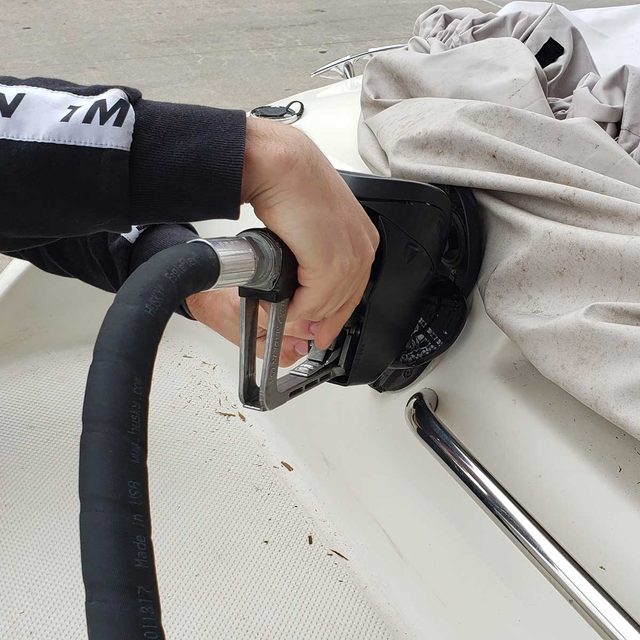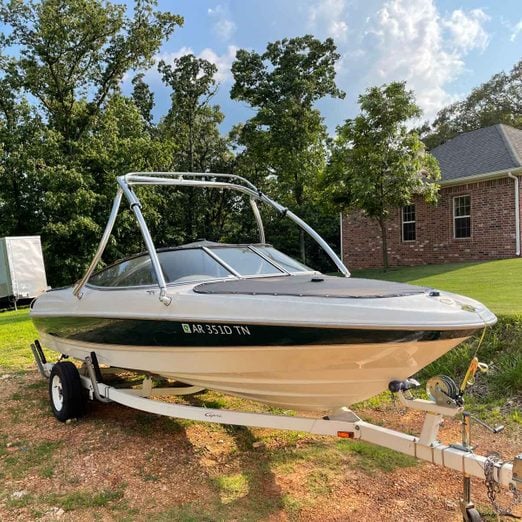How To Winterize Your Boat and Trailer
Updated: Apr. 17, 2024
Learn how to winterize a boat.
An hour or less
Beginner
Varies
Introduction
You've had a blast on the boat with family and friends all summer, but now it's time for all that water fun to end. If you want to repeat the good times next year and protect your engine during the cold winter months — thus minimizing early season startup problems — read on.
Note: This how-to features an inboard 1999 Bayliner 2050ss Capri stored in Northwest Arkansas, a freshwater environment where the winters rarely get below -10 F. For colder climates, the process is similar, but should incorporate an antifreeze that can stand up to the typical winter temps there.
Consider this a general overview of the process. Every boat is slightly different, every climate has unique requirements and saltwater and freshwater situations require different steps.
Tools Required
- Battery charger
- Cleaning rags
- Flashlight
- Flathead screwdriver
- Garden hose
- Motor flusher engine muffs
- Thin piece of wire
- Work gloves
- Wrench
Materials Required
- Antifreeze
- Boat cleaner (any multi-purpose cleaner will work)
- Fogging oil
- Fuel stabilizer
- Gasoline
- Marine grease
- Rags
Project step-by-step (11)
Set Up Your Workspace
- With your boat still on its trailer, part it in a driveway or other flat, roomy spot within easy reach of a hose, where it will be easy to work on.
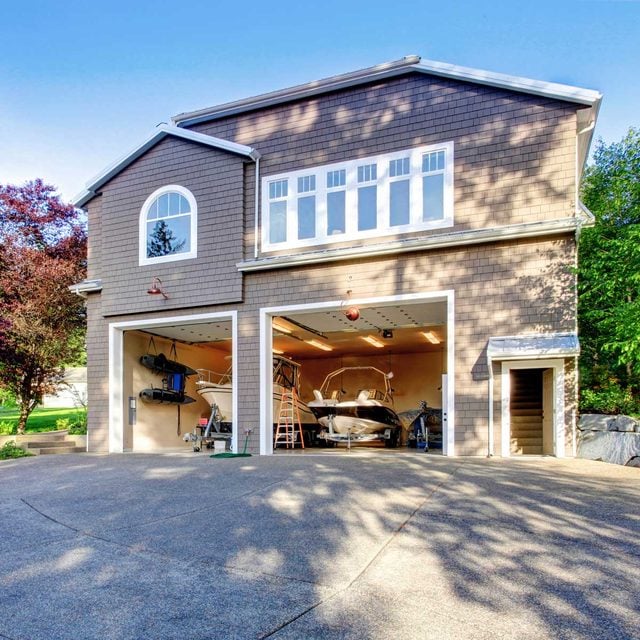
Locate the Drain Plugs
Drain plugs can be challenging to find, so make sure to do this before diving into the winterization process. Plus, if the boat engine is hot, it will make feeling your way around unsafe.
- Pinpoint exactly where the drain plugs are, using the owner’s manual or some online research.
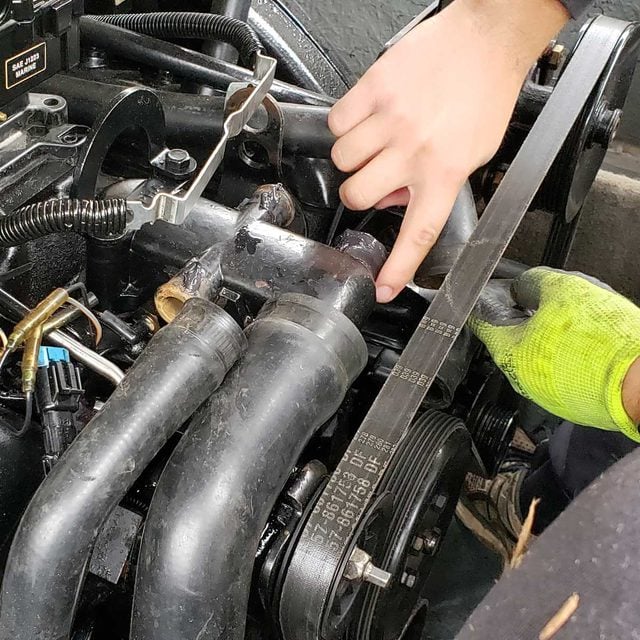
Prep the Gas Tank
- Add fuel stabilizer to the tank to keep the gas from turning bad over the stagnant winter months and help avoid cold starts in spring.
- Follow label instructions. We used 3.6 oz. of STA-BIL 360 Marine in our 34-gallon tank.
- Fill the tank with gas to prevent air (and therefore condensation).
- Condensation equals water, which you don’t want in your fuel come spring.

Run the Boat
- Run the boat on dry land, following your typical procedure. Find the water intake, located on the stern drive. Place muffs over it and run water into the inlet via a garden hose, which will prevent overheating. Start the engine and allow it to reach operating temperature. Here’s a good tutorial if this is a new process for you.
- Run the boat for as long as it takes for the gauges to reach normal operating temperature, typically around 15 minutes.
- This opens the thermostat to allow antifreeze to circulate through the engine.

Fog the Engine (optional)
Many people don’t do this, or don’t do it every year, though it protects the cylinders and carburetor from corroding and isn’t difficult.
- While the engine is hot, spray fogging oil into the carburetor until the engine dies.
- The oil will suffocate the engine while coating the carburetor and cylinders in a thin layer of oil.
- We used STA-BIL Fogging Oil, which has a good reputation. There are plenty of other brands on the market.
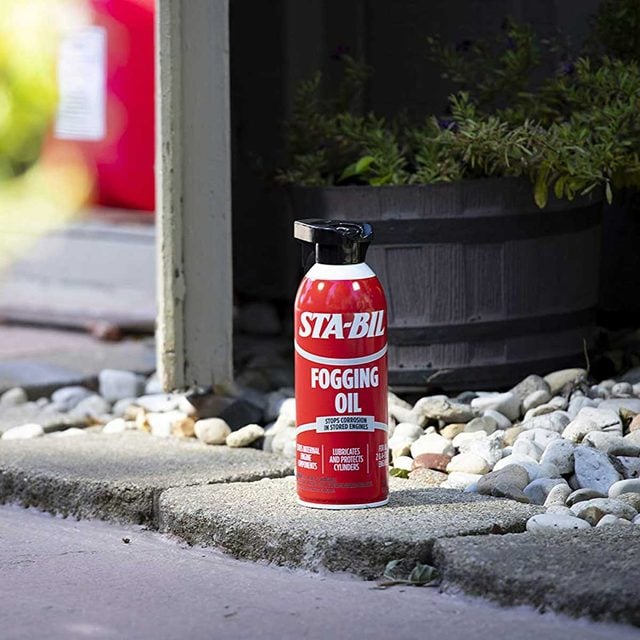
Drain Engine
- Carefully hand-remove each drain plug. (You may want to wear gloves.)
- Take care! The engine will be hot, which means hot water will gush out when you remove each plug.
- Poke a thin piece of wire into the drain hole to loosen any built-up debris.
- Replace plugs.
- Be careful to not over-tighten, since these are typically made of plastic and can easily break.
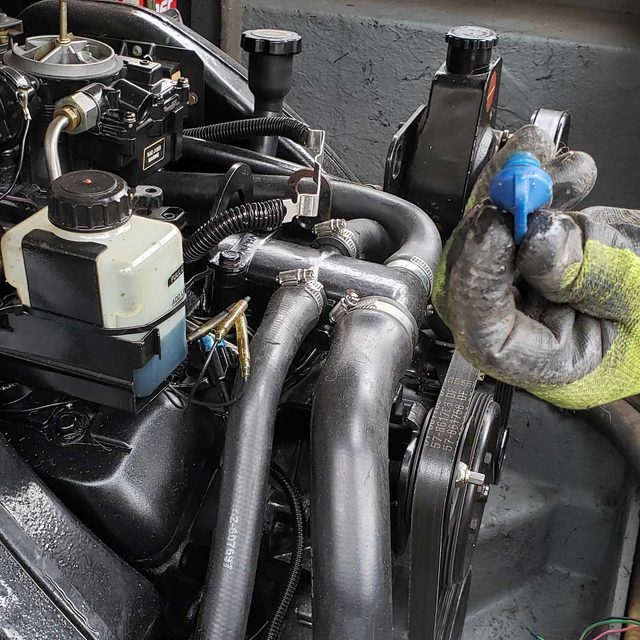
Top Off Oil (If Necessary)
- Locate the dipstick and check the oil level.
- If it needs oil, add until the level is above minimum and below maximum, as indicated on the dipstick.
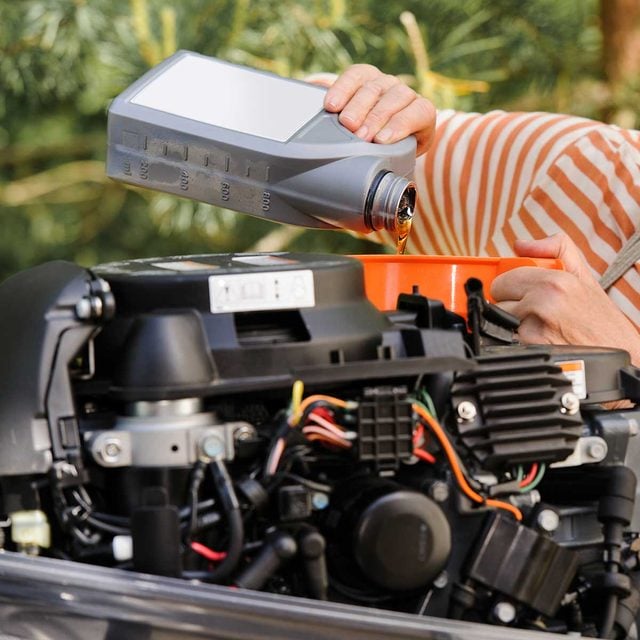
Drain Hoses and Add Antifreeze
- Unscrew the thermostat-housing hose clamps with a flathead screwdriver and dump out any residual water.
- Our boat has four hoses, two for the exhaust manifold and two for the block.
- Check housing inlets and outlets for corrosion and grease the metal connection points.
- Check hoses for leaks.
- Pour the antifreeze into each hose until it pours back out through the thermostat housing, as shown here.
- If you live in a colder climate, where temps can regularly drop below zero, make sure to use an antifreeze appropriate for those temperatures.
- Reinstall hoses and tighten hose clamps.
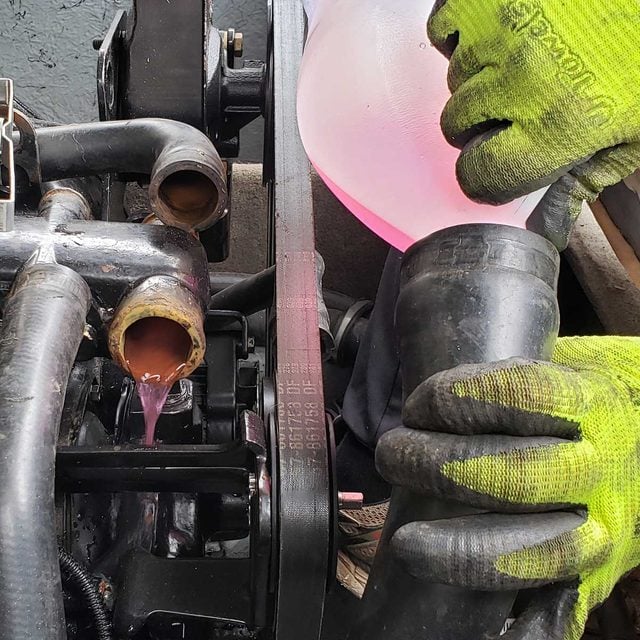
Clean Boat Interior
This step may seem pointless, but I can’t stress how important it is! You’ll be glad you cleaned and organized the boat when you go to open it next spring.
- Wipe down interior with a boat cleaner or multi-purpose cleaner.
- Consider waxing your boat as well.
- Remove life jackets, water bottles, sunscreen bottles, etc., for storage elsewhere.
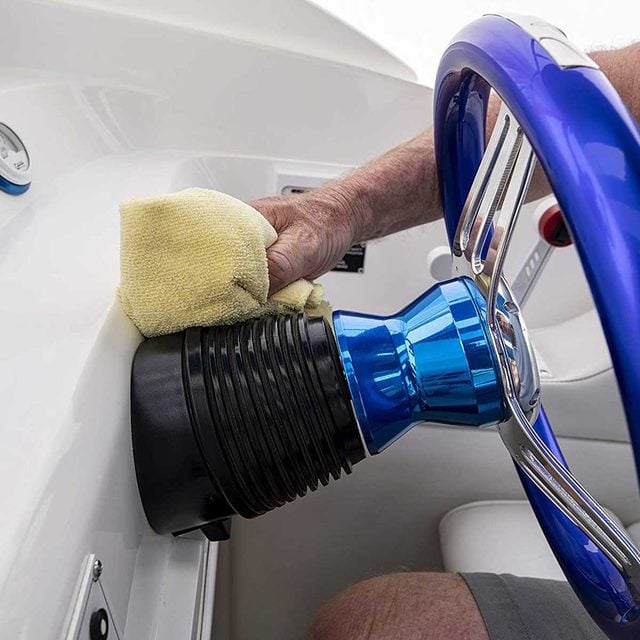
Remove Battery
Sitting around unused in the cold for months will shorten its life.
- Remove the nuts off each battery terminal.
- Every boat battery terminal is a bit different, but we used an 8-mm. wrench on ours.
- Label the positive and negative wires with a piece of tape and a Sharpie for easy re-install in the spring.
- Bring the battery inside to a covered, ideally climate-controlled space, and plug it into a charger.
Winterize the Trailer
There’s not a ton to winterize on the trailer, but it’s still important. Moving a boat from a neglected trailer is not a fun task. (Trust us — we’ve done this with a jet ski, which was difficult enough!)
- Top off boat fuel.
- A full tank will mean additional weight on your tires and will give you a better gauge of tire pressure.
- Note that each gallon weighs about six pounds.
- Fill up tires with air, with your air compressor or at the gas station.
- Every tire is different so refer to the tire’s sidewall. Do not exceed the maximum pressure rating.
- Inspect trailer and bearings for rust and corrosion.
- Address these issues now before your trailer and boat are parked for the winter. Here are some ideas for winter boat storage.
